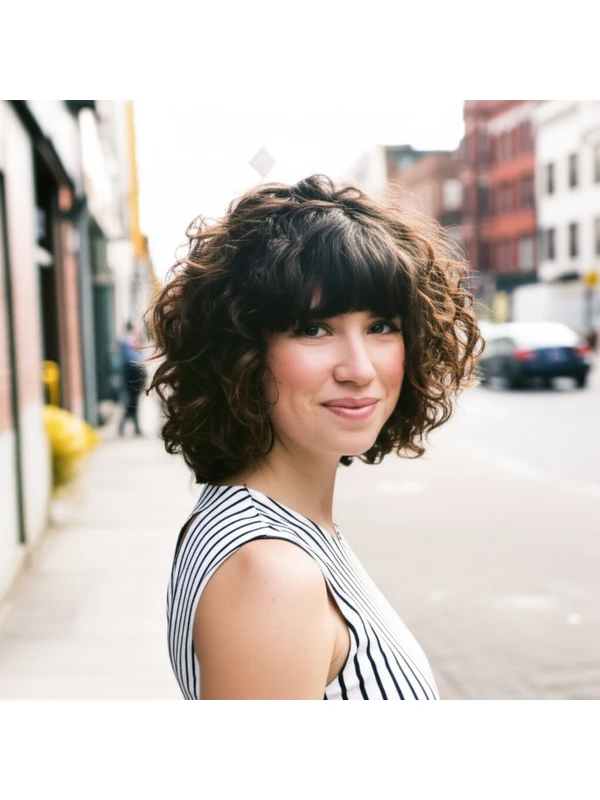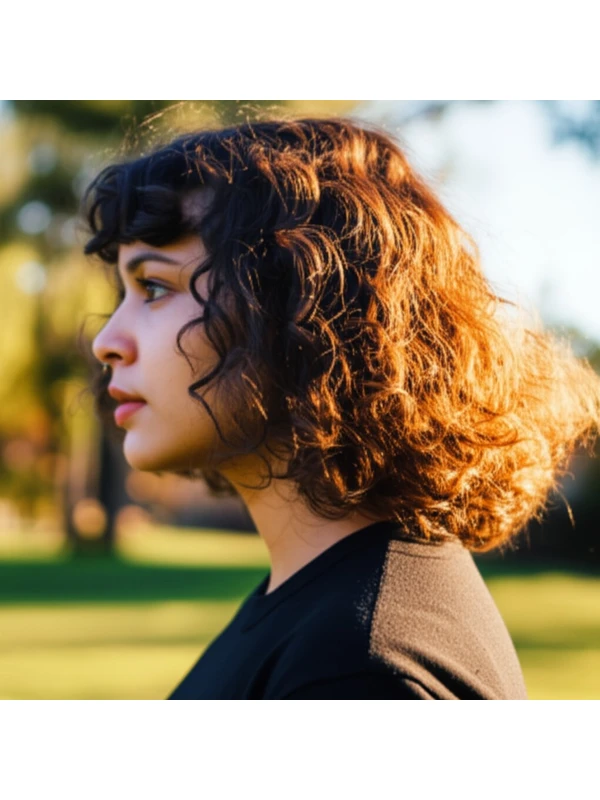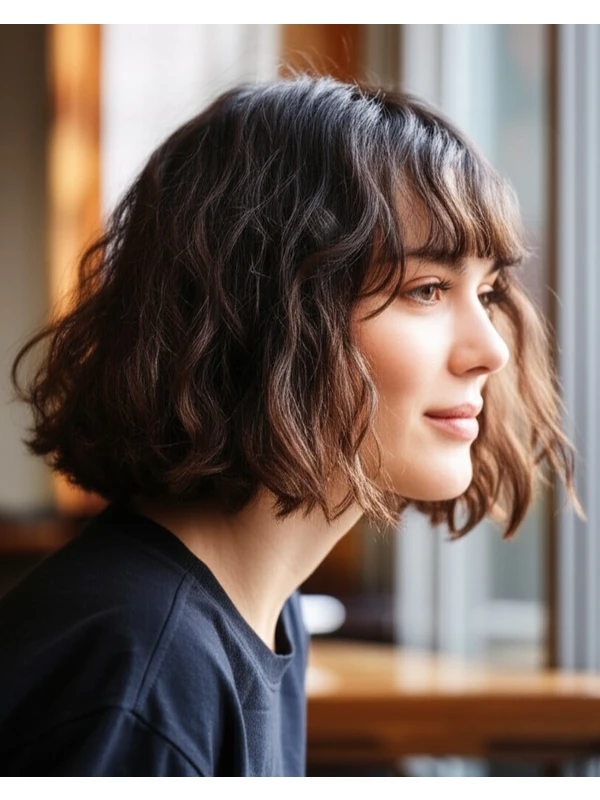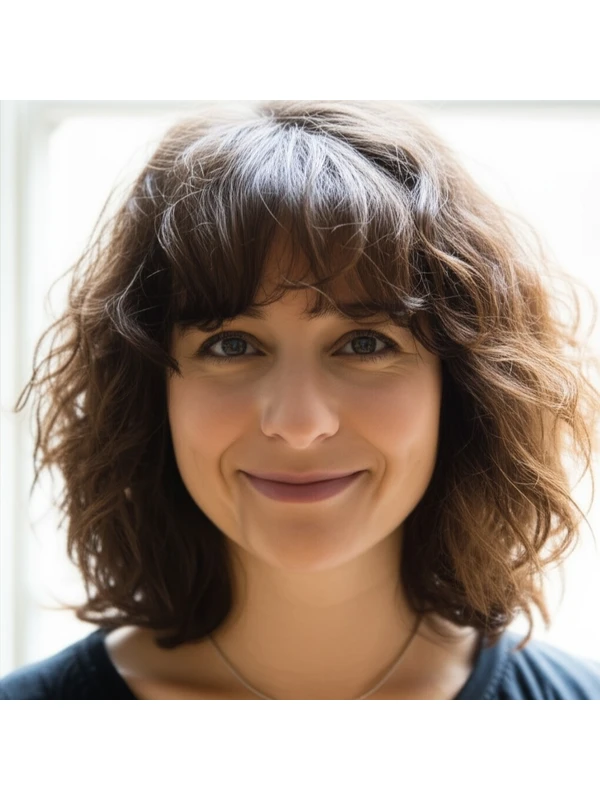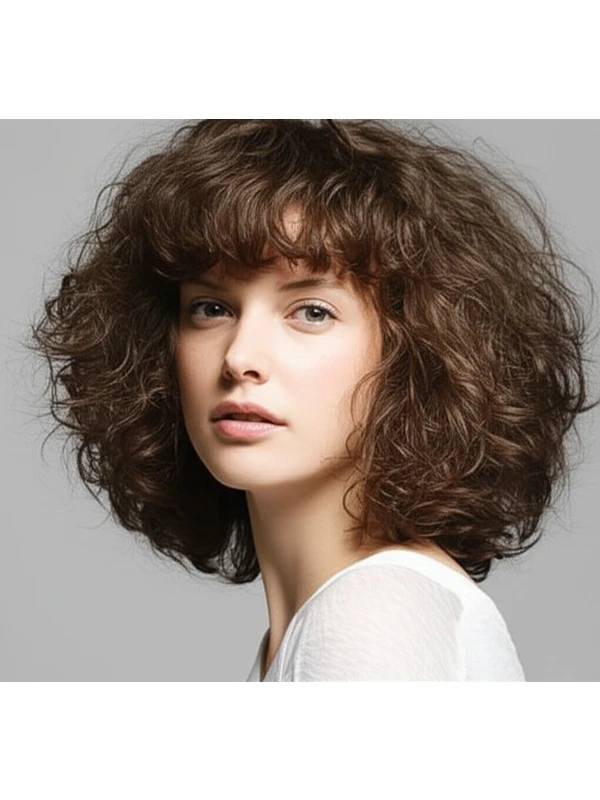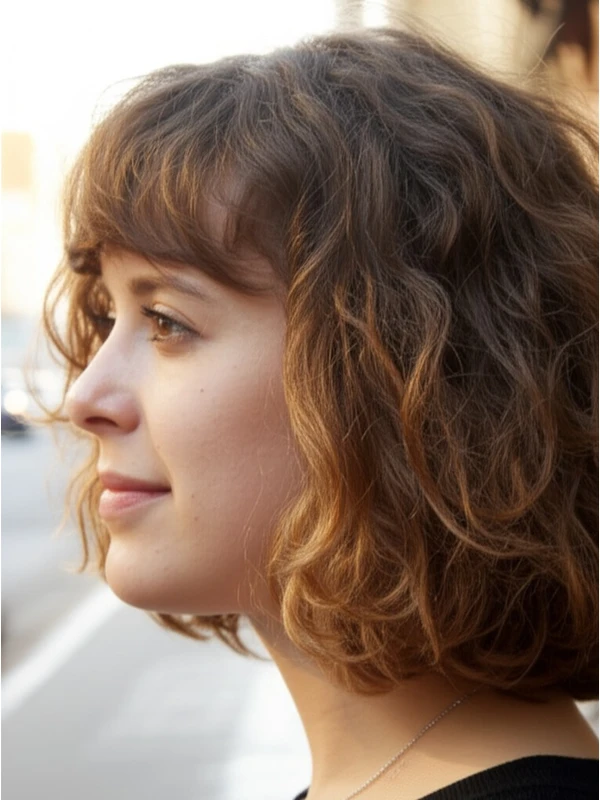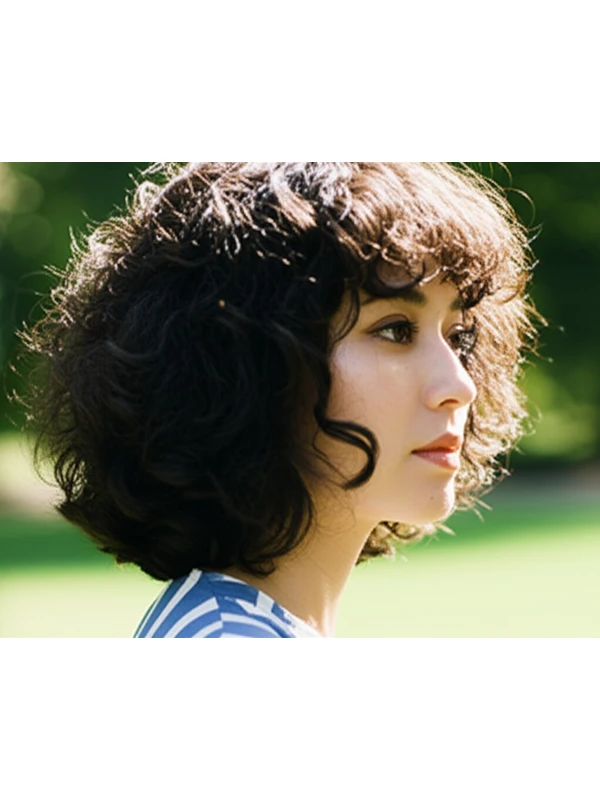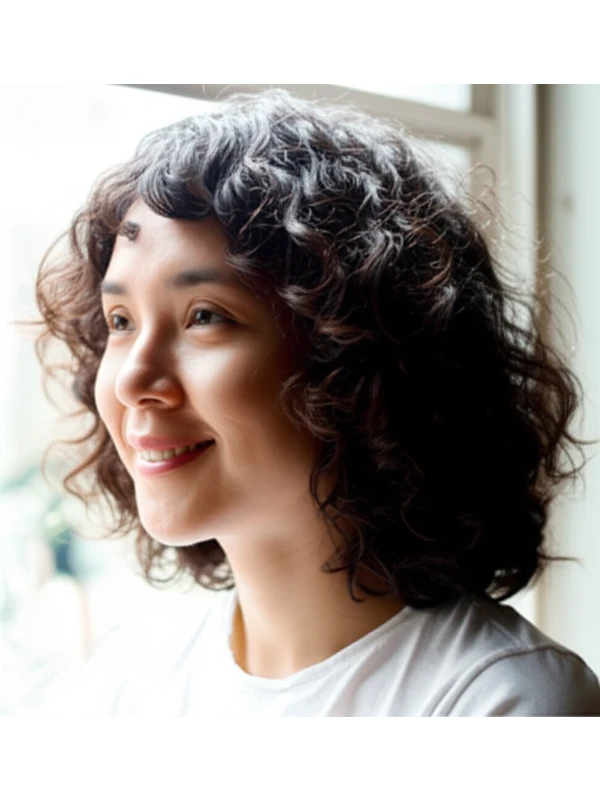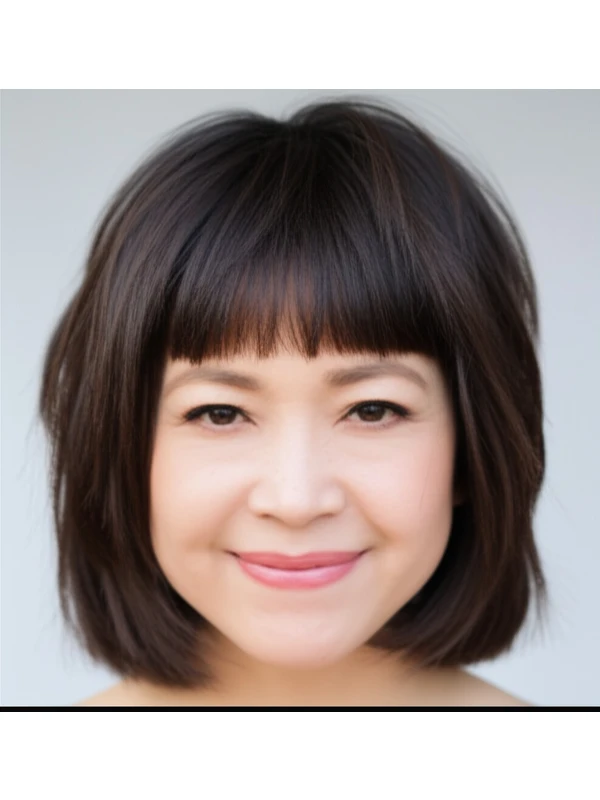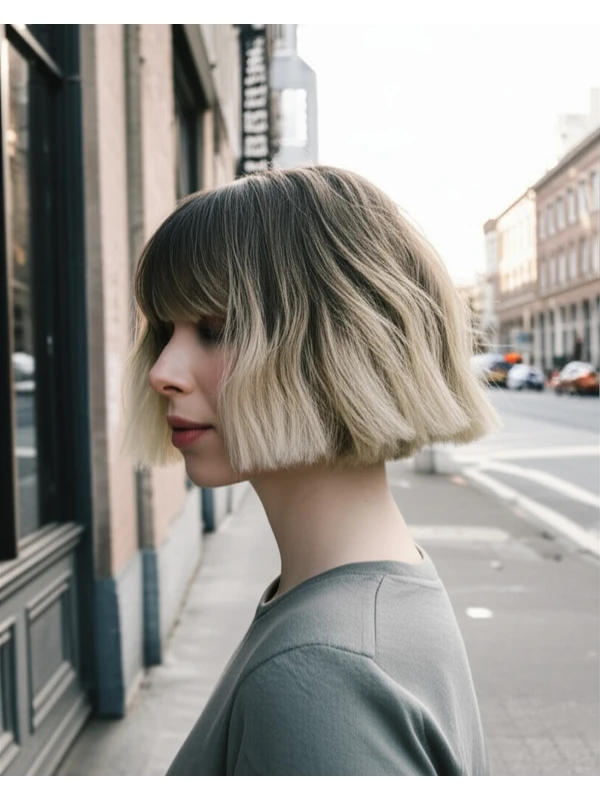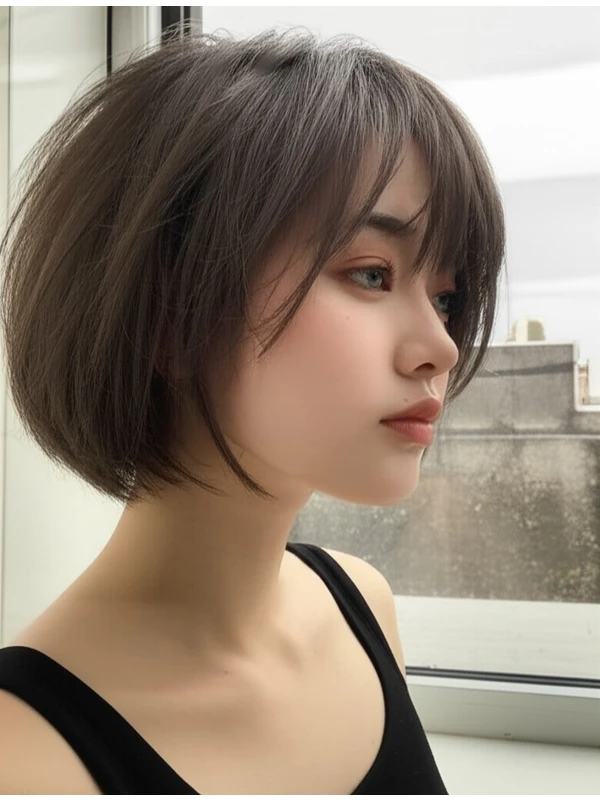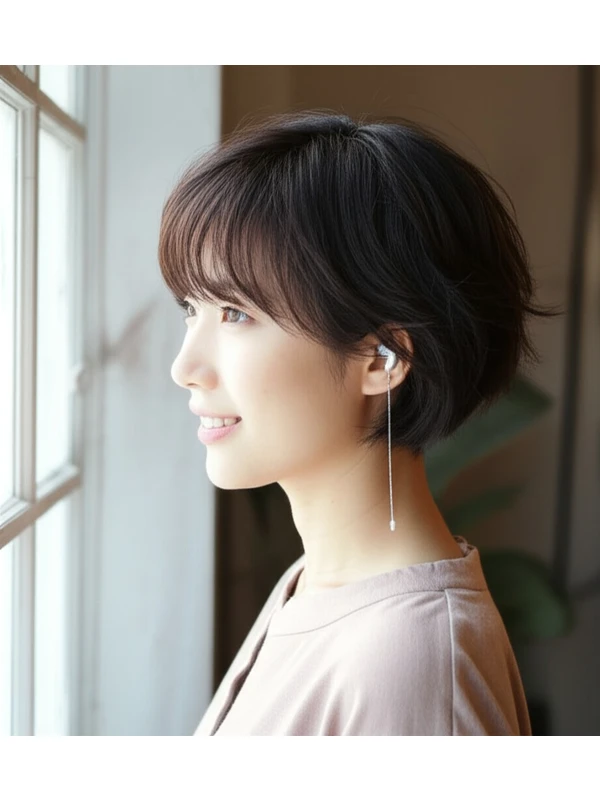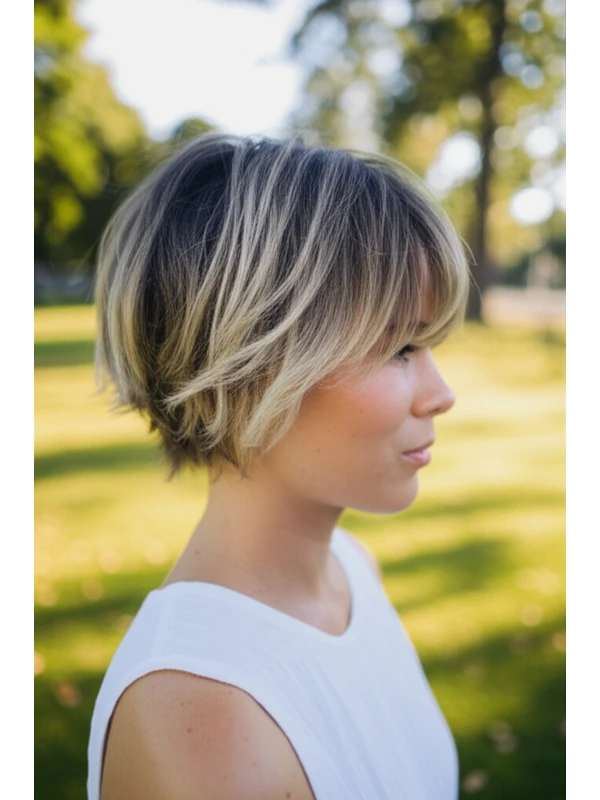#Curly Bangs: A Complete Guide to Effortless Texture
Curly bangs are having a moment – and for good reason! They offer a playful, face-framing update that embraces natural texture rather than fighting against it. But nailing the look requires understanding how they interact with your unique hair type, face shape, and personal style. This guide breaks down everything you need to know about curly bangs, from cut geometry to styling secrets.
#1) Background & Definition: What are Curly Bangs?
Curly bangs aren't just straight-across bangs that happen to be on curly hair. They’re specifically cut with a degree of layering and angling designed to enhance natural curl patterns. The goal is movement, softness, and a flattering frame for the face.
- Cut Geometry: Typically shorter in the middle (around brow level) and gradually longer towards the sides, allowing curls to cascade naturally. The angle of the cut is crucial – too blunt and they’ll look heavy; too angled and they might disappear into the rest of your hair.
- Key Features: Softness, movement, face-framing, embracing natural curl pattern.
- Length Ranges: Generally fall between 4-8 inches long (measured from hairline). Shorter bangs are bolder, while longer ones offer more versatility.
- Alternative Names: Textured fringe, curly fringe, wavy bangs, shaggy bangs (can overlap with other styles).
#2) Face Shape Fit: Finding Your Bang Harmony
Curly bangs can be incredibly flattering on a variety of face shapes when styled correctly. The key is understanding how the angles and volume play against your features.
- Oval: Lucky you! Oval faces are generally considered universally flattering for most hairstyles, including curly bangs. Experiment with length and density – shorter, wispy bangs or longer, more voluminous ones will both work beautifully.
- Round: Avoid blunt, straight-across bangs which can emphasize roundness. Opt for angled curly bangs that taper down the sides of your face to create a slimming effect. Longer lengths (6-8 inches) are often most flattering. A side part also helps break up symmetry.
- Square: Soften the angles of a square face with wispy, textured curly bangs. Avoid harsh lines or blunt cuts. Curtain bangs that gently sweep to either side can be very effective.
- Heart: Curly bangs add softness and balance to a heart-shaped face (wider forehead, narrower chin). Side-swept bangs are particularly flattering, drawing attention away from the forehead. Consider a slightly longer length (6-8 inches) for added balance.
- Diamond: Curly bangs can soften the angles of a diamond face (wide cheekbones, narrow forehead and chin). A middle part with softly layered curly bangs that blend into your overall style is often ideal.
- Oblong: Curly bangs add width to an oblong or long face. Shorter, more voluminous bangs will help create the illusion of a shorter face length.
#3) Body Proportions & Height Guidance: Tailoring Bangs to Your Silhouette
Beyond face shape, your overall body proportions influence how curly bangs look and feel.
- Petite: Shorter, less voluminous bangs (4-6 inches) prevent the face from looking overwhelmed.
- Average: Most lengths work well; experiment with different volumes and angles.
- Tall: Longer bangs (7-8 inches) can help balance a taller frame.
- Narrow Shoulders: Bangs that add width across the forehead visually broaden shoulders, creating more symmetry. A side part also helps.
- Broad Shoulders: Avoid overly voluminous bangs which can exaggerate shoulder width. Softer, blended bangs are best.
- Short Neck: Shorter bangs (4-6 inches) prevent your neck from looking shorter than it is.
- Long Neck: Longer bangs (7-8 inches) help to visually shorten the neck and create a more balanced proportion.
#4) Works Best With Hair Types & Densities: A Texture Breakdown
Curly bangs are designed for curly hair, but their success depends on your specific curl type and density.
- Straight/Wavy: While possible, achieving truly curly bangs requires careful cutting and styling to encourage wave or curl formation. Products with hold and definition are essential.
- Curly (2A-3C): This is the sweet spot! Curly bangs naturally embrace their texture. The stylist can cut them to enhance your existing curls.
- Coily (4A-4C): Curly bangs work beautifully on coily hair, but shrinkage needs serious consideration. Account for significant shrinkage when determining length – what looks like 6 inches in the salon might end up being closer to 3-4 inches once dry!
- Fine Hair: Layering is key to prevent fine curly bangs from looking stringy. Texturizing products add volume and definition.
- Medium Hair: The most versatile density; allows for a good balance of volume and movement.
- Thick Hair: Requires strategic layering to avoid heaviness. A lighter, more diffused fringe will look best.
#5) Styling Variations: From Sleek to Textured
The beauty of curly bangs is their versatility!
- Sleek vs. Textured: A sleek style requires smoothing products and potentially a flat brush (use sparingly!). For textured, embrace the natural curl – air dry or diffuse.
- Middle vs. Side Part: A middle part creates symmetry; a side part adds softness and asymmetry.
- Fringe Variations: Wispy bangs are softer than blunt bangs. Curtain bangs gently sweep to either side. Choppy layers add texture and movement.
- Occasion Styling: For casual looks, air dry or diffuse with minimal product. For the office, a slightly more polished look might require smoothing products. Evening events allow for bolder styling – consider adding hair accessories!
#6) Maintenance: Keeping Your Bangs Looking Fresh
- Trim Cadence: Every 4-8 weeks, depending on growth rate and desired style.
- At-Home Routine: Gentle cleansing, hydrating conditioner, leave-in moisturizer (essential for curls!), styling product.
- Heat vs. Air Dry: Minimize heat styling to protect curl health. Diffusing is a gentler alternative to direct heat.
- Product Checklist:
- Shampoo & Conditioner: Hydrating and moisturizing formulas.
- Leave-In Conditioner: For moisture and detangling.
- Styler (Gel, Mousse, Cream): To define curls and provide hold.
- Finishing Oil/Serum: To tame frizz and add shine.
- Estimated Daily Styling Time: 5-15 minutes, depending on styling method.
#7) Grow-Out Roadmap: Bang Evolution
Curly bangs evolve as they grow out.
- Months 1-3: Maintain the initial shape with regular trims.
- Months 4-6: The bangs will start to blend more seamlessly into the rest of your hair. You can experiment with longer lengths or different styling techniques.
- Maintaining Shape: Between cuts, use a small amount of product and gently reshape with your fingers. Avoid brushing unless you're going for a very sleek look.
#8) Color Pairings: Enhancing Your Bangs
Color can dramatically enhance curly bangs!
- Cool Undertones (Ashy Blonde, Cool Brown): Soft, muted tones complement cool-toned skin and create a sophisticated look.
- Warm Undertones (Golden Blonde, Warm Brown): Rich, warm hues add dimension and vibrancy to warmer complexions.
- Low-Commitment Options: Highlights or balayage around the bangs can add subtle dimension without a full color change.
#9) Season & Occasion Guide: Styling for Every Moment
- Spring/Summer: Embrace lighter styling – air dry, minimal product, and let your curls shine!
- Fall/Winter: Add more moisture and definition to combat dryness. Consider deeper tones for added warmth.
- Work: A polished look with controlled frizz is ideal.
- Weddings/Parties: Experiment with bolder styles – braids, twists, or decorative hair accessories.
#10) Cost & Time: Salon Investment
- Salon Time: Typically 30-60 minutes for an initial cut; shorter trims (15-30 minutes) thereafter.
- Price Range: Expect to pay a bit more than a standard trim – typically in the mid-range of salon services.
#11) Pros & Cons: Weighing the Options
Pros: Face-framing, versatile styling options, embraces natural texture, can soften facial features. Cons: Requires regular trims, potential for frizz, may require more product and styling time than other styles, shrinkage with curly/coily hair needs careful consideration.
#12) Salon Consultation Script: Your Questions Answered
Here are some questions to ask your stylist during the consultation:
- "I'm interested in curly bangs. Can you assess my curl pattern and density to determine if this style will work for me?"
- "What length would be most flattering for my face shape, considering my hair shrinkage?"
- “Can we discuss how to maintain the shape of the bangs between cuts?”
- “What products do you recommend for styling my curly bangs at home?”
- "How long should I expect it to take me to style them daily?"
#FAQs: Your Burning Questions
- Will curly bangs make my hair look frizzy? Frizz is a common concern, but proper moisturizing and styling techniques can minimize it.
- Can I get curly bangs if my curls are very tight (4C)? Absolutely! Just be sure to account for significant shrinkage when determining length.
- How do I prevent my curly bangs from looking too heavy? Strategic layering is key – ask your stylist to thin out the bangs and create movement.
- What’s the best way to dry curly bangs? Diffusing on a low heat setting is ideal for preserving curl definition and minimizing frizz.
- Can I style my curly bangs straight? Yes, but it requires significant effort and heat styling, which can damage your curls over time.
- Are curly bangs suitable for all ages? Absolutely! The key is to tailor the length and volume to complement individual features and preferences – from teens to mature women, this style can be incredibly flattering.
